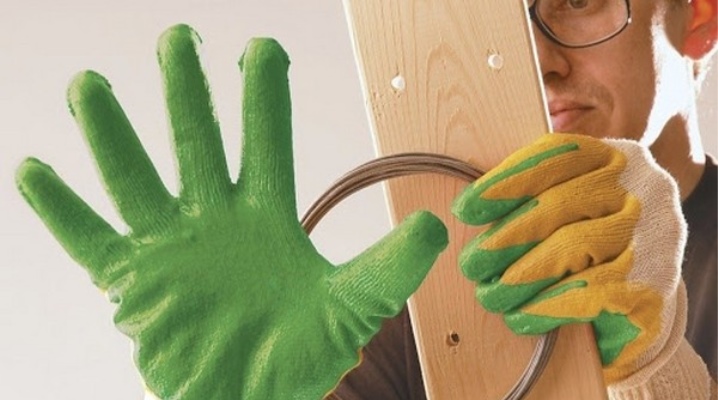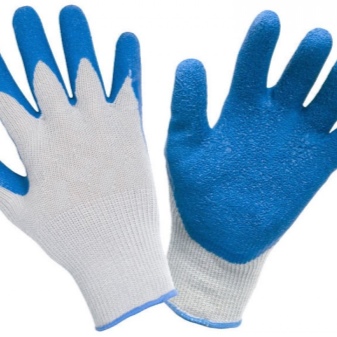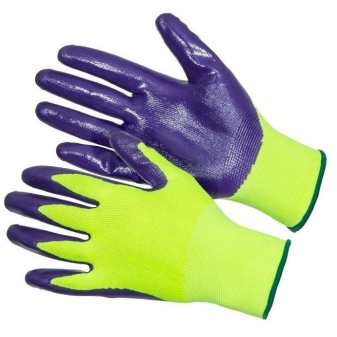How to choose construction gloves?

Despite the total automation of construction technologies and the use of specialized equipment, the share of manual labor in the work process remains high. That is why construction workers need to reliably protect their skin and fingers from temperature, chemical, and mechanical stress. Today, there are many varieties of work gloves on the market - products differ in materials, density and texture. In our review, we will try to give the maximum useful information about this category of protective equipment.

Peculiarities
All types of repair and construction work involve not only the use of large equipment and tools, but also the obligatory wearing of overalls and its protective elements. Construction gloves protect the skin from cuts, damage, cracks and calluses. They allow you to work in frosty weather and prevent damage from harmful substances.
Each foreman responsible for the activities of builders is obliged to foresee all the little things before starting work and purchase construction gloves with a stock for all his working personnel - otherwise there is a great risk of injury to workers.

Construction gloves are made in different versions.
- There are many cheap models from recycled materials on the market, it is almost impossible to use them more than one-time use - the fabric is thin, quickly spreads along the seam, and holes form on it. Frequent wearing of such work gloves does not make any sense. However, for one-time use during the working day, such models are optimal, especially since they cost an order of magnitude cheaper than others and at the end of the work it is not a pity to throw them away.
- More durable protective gloves are also available that support high tensile and abrasion effects. They are distinguished by strong threads that do not fall apart even when a large hole appears. Usually, such gloves provide additional protection, rubber inserts and dusting and thereby create conditions for the most efficient and safe work, allow you to easily and confidently handle materials and work tools.
- Construction gloves made of cotton with the addition of additional components are considered the most reliable - these can be bleached or black harsh polyester threads, it is much more comfortable to work in such gloves.



Varieties
By appointment
All leggings on sale can be conditionally divided into several groups.
- For work in the winter season, warm models are used - for their production they take thick threads with the addition of wool, products provide for fur and leather inserts.

- When performing repair and construction work related to the installation of electrical wiring, gloves with a latex or rubberized layer are used - it does not pass current, so the risk of electric shock is reduced to zero.

- When dealing with hazardous media, it is best to give preference to protective equipment coated with latex, neoprene or nitrile. Such equipment allows you to work even with acid-base solutions, which is why such models are common for work in which solvents and paints and varnishes are used.

- Gloves made of synthetic and cotton materials will help protect your hands from the mechanical effects of bricks and building blocks.They are distinguished by wear resistance and strength, capable of withstanding a wide variety of temperatures - such models are optimal for performing external and internal construction work.

By material
Today on the market there are a wide variety of models of construction gloves made of natural and synthetic materials.
The most widespread are cotton products - they are practical and reliable, moreover, they are sold in almost any store and are inexpensive.
The benefits of cotton are clear.
- Coated cotton gloves are highly regarded by construction workers for their safety features. They protect the skin from cracking, scratching, cuts and abrasions. These gloves provide the most reliable grip - a heavy object will not slip out of your hands, thereby minimizing the risk of injury.
- Cotton threads are characterized by increased strength and, at the same time, elasticity, so any gloves from them are worn by workers for a very long time - the material does not wear off even under constant high mechanical stress.
- As you know, cotton is a completely natural raw material. Therefore, it is hypoallergenic, does not cause swelling and itching, the skin breathes in it, and the gloves do not hinder movement.
- When decomposed, cotton does not emit toxic substances, so gloves made of cotton fabrics do not require specific disposal - they can simply be thrown away.
- There are highly specialized protective equipment, which, due to the specifics of the operation, is quite difficult to get. This does not apply to cotton gloves, they are generally available, and you can buy them at every hardware store.
- Another advantage of cotton gloves is their fire resistance. When in contact with a flame, cotton does not ignite, but begins to smolder and this minimizes the risk of burns.
- A small addition of synthetic threads gives the gloves elasticity, while not impairing their basic performance parameters. However, such materials do not allow air to pass through, in addition, they are highly flammable, therefore, they are not recommended for frequent use in construction work.
- Winter gloves for construction workers are additionally insulated with acrylic or woolen thread.





Criterias of choice
The use of construction gloves as a means of personal protection for a worker can take place in different modes, which is why protective equipment is chosen taking into account what the workers plan to do and what tasks they are assigned to. For work in frosty weather, there are insulated models; in contact with aggressive chemicals, specialized gloves with a protective coating are used. Point work involves the use of fingerless models.
- When choosing the optimal product, one should not forget about important technical parameters.
- Materials used. Generally, natural materials show a longer lifespan. In addition, the skin in them breathes freely and hands sweat much less, while synthetic ones cause allergic irritations. However, such gloves are more expensive - in order to reduce the price, in their manufacture, they resort to mixing natural and artificial fibers.
- Density of the thread. In fact, this parameter can be considered key, since the stronger the thing, the longer it will serve.
- The presence of a protective layer. Depending on the model of gloves, it can be solid in the form of a line or in the form of dots - most often the coatings are made of polyvinyl chloride, although there are options for latex, nylon and other compounds to protect the product.
- Of particular importance is the class of knitting, which determines the mass and density of the product. For a one-time execution of construction and repair work, as well as at home, you can use gloves in which this parameter corresponds to 5-8 units.For professional work at construction and installation sites, a value of at least 10 is required, in places where increased concentration and accuracy are needed, the indicator can reach 13 or even more.
- When choosing a hand protector, it is very important to ensure that the model is the right size, has a practical finish and meets all the basic requirements for durability.
When buying gloves for construction, be sure to ask for all the necessary certificates, as well as documents confirming compliance with the requirements of GOST and a high level of quality.





An overview of various construction gloves in the video.













The comment was sent successfully.